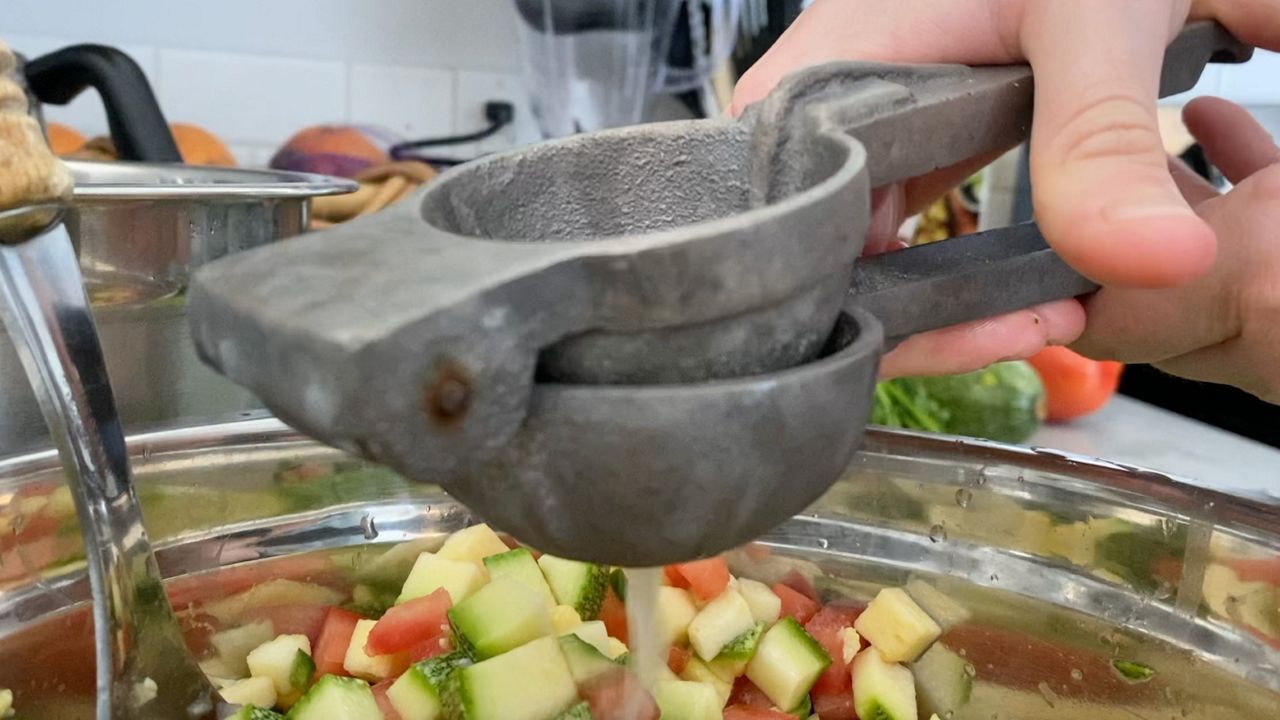AUSTIN, Texas — Currently, there’s a nationwide push to diversify the field of dietetics to expand what we consider to be "healthy eating."
Food is something we all hold near and dear to our hearts. So much of our culture revolves around food. Many of our happiest memories happened around the table, and food can serve as a comfort for us during tough times.
But when it comes to “healthy eating” — we're pretty single-track minded.
Kale, quinoa and cauliflower may be a few things that automatically come to mind. But the truth is, there's a wide variety of foods that can make up a healthy diet.
Dietitian, Vanessa Beltran knows what we see on grocery store shelves can be different depending on where someone lives.
Holding up a calabacita squash, Beltran explains, "These you may not find at a lot of regular stores, these are much more about what you would find in Mexico." Picking up another vegetable, she adds, "And you would probably also not see these, which is a chayote squash, this was another thing that I grew up eating."

When Beltran is craving a little taste of home, she visits La Michoacana.
Beltran was born in Mexico City and moved to Texas when she was six. Since then, she's left only once for Boston to get her Masters of Public Health at Harvard.
“I came back as soon as I could 'cause I’m a Texan through and through — and a Mexican," she laughs. "I really missed my culture when I was in the Northeast. You really can’t find the chayote or the calabassa anywhere there."
But Texas isn’t without gaps of its own.
"It’s very difficult to find dietitians who are Spanish-speaking and completely fluent. And sometimes that’s what patients need," Beltran explains.
After the store, we reconvened in Beltran's kitchen to make calabacitas, which she explains is a traditional Mexican dish.

"Whenever I would wake up at my grandma’s house, almost always the first conversation to happen around the breakfast table was, 'Okay, what are we going to make for lunch?’" she says.
It's in her kitchen where Beltran is most in her element.
But that element differs from person to person. And that’s part of the reason why there’s now a nationwide push to diversify the field of dietetics.
According to the Academy of Nutrition and Dietetics, of the 93,000 registered dietitians in the U.S. today, 3.1% are Hispanic or LatinX, 2.6% are Black, and 0.03% are American Indian.
As a result, recommendations for what we consider to be “healthy eating” are pretty one-dimensional and non-Western foods are typically ignored. Beltran says that’s a problem.
"I might have a Pakistani patient followed by a Nepali patient followed by a Nigerian patient —was I really well-equipped to speak with any sort of authority or speak with any sort of real knowledge about many of those diets that were not my own? No."
As the Director of Diversity and Inclusion for the Austin Registered Dietitians Alliance, Beltran is spearheading efforts to increase cultural competence.
"A lot of times we don’t — through policy or even just through practice — don’t stop and think of what foods make sense for these communities," she said.
She says when dietary recommendations are divorced from a person’s culture, they’re not only less successful, but also less sustainable.
"If you look at those communities, they have disproportionately high rates of chronic diseases, like diabetes and hypertension," she said.
Beltran describes food as "the rhythm of my day."
As she takes the first bite of the meal she just prepared, she says it "Reminds me of being home," a feeling she hopes everyone will one day share.



